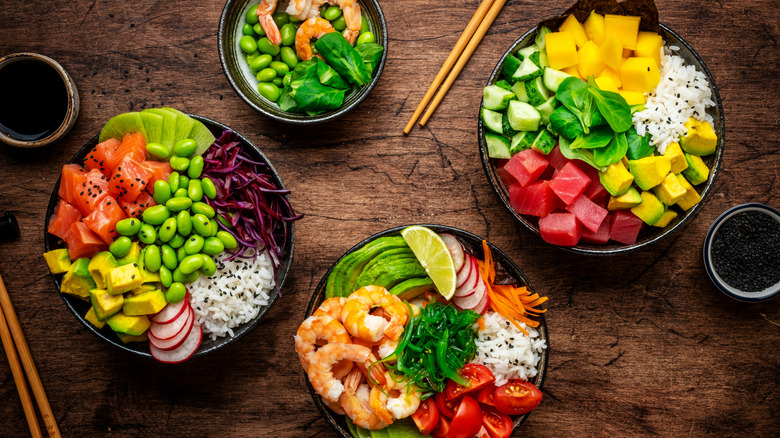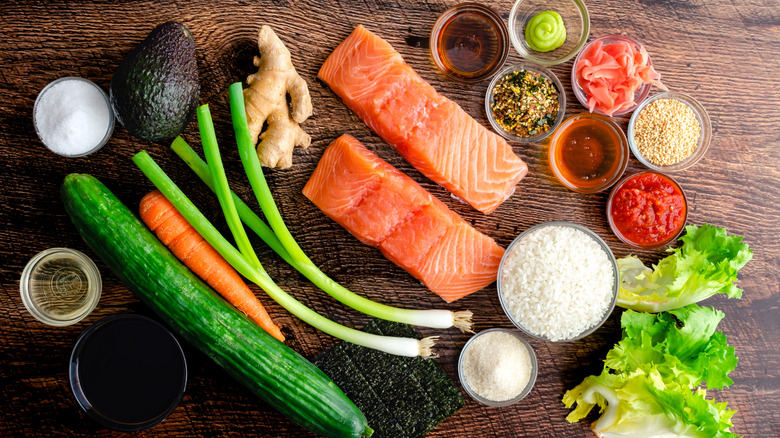Despite The Raw Fish, Sushi And Poke Bowls Aren't The Same
At first glance, sushi and poke bowls might seem like twins, but look closer and you'll see that they're far from identical. The word "poke" (pronounced POH-keh) comes from the Hawaiian word meaning "to slice or cut," referring to the way fish is prepared for the dish. Though influenced by Japanese cuisine, poke is rooted in Hawaiian tradition and was originally made with freshly caught ahi tuna or octopus, then seasoned with ingredients like seaweed and sesame oil.
Sushi bowls, by contrast, are a product of Japanese culinary tradition where thinly sliced sashimi is layered over vinegared rice. This focus on clean, precise preparation highlights the cultural distinction between the two. Before diving into either, just remember to mind your chopsticks — some habits can upset both the living and the departed.
Ultimately, sushi bowls bring elegance and tradition to the table, while poke bowls celebrate customization and local flavor. The choice is all about what suits your mood and what's available.
Toppings, bases, and sauces: the real dividers
Toppings are where sushi and poke bowls truly show their differences. Sushi bowls stick to tradition with ingredients like sashimi, roe, and avocado, delivering subtle flavors and richness. Poke bowls, on the other hand, open the door to more creativity, with toppings like edamame, pineapple, or even kimchi. (And no, edamame and lima beans aren't the same — let's clear that up now.) These mix-ins reflect poke's Hawaiian roots and its modern, ever-evolving nature (though you can likely find sushi bowl makers who aren't afraid to innovate).
Sauces take the contrast even further. Sushi bowls lean on light, classic flavors like soy sauce or ponzu to highlight the fresh fish. Poke bowls, meanwhile, embrace bold marinades and creamy blends like spicy mayo or shoyu, adding an extra layer of flavor to every bite. This difference mirrors the cultural origins of the dishes — sushi celebrates minimalism, while poke thrives on customization.
Even the base options highlight poke's flexibility. Sushi bowls stay loyal to vinegared rice, a hallmark of Japanese tradition. Poke bowls branch out with choices like kale, greens, quinoa, or noodles. And if you're spicing things up, real wasabi may add a unique — but pricey — punch, though store-bought options are perfectly fine for most.
In the end, sushi bowls offer a refined and traditional experience, while poke bowls let you experiment with flavors and textures. No matter which you choose, both are fresh, satisfying ways to enjoy raw fish with a side of culture.

